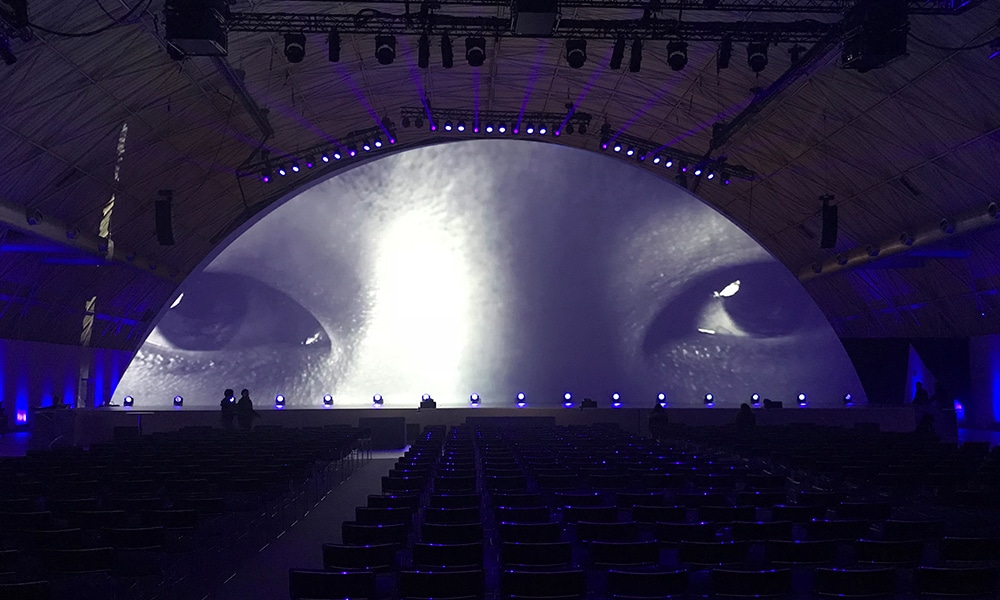Sorry if the silence on the Blog has lasted a little longer than expected, but we are working on a “Top Secret” project that will be released in the coming days and we have been focusing all our efforts on this project, so that once launched it would be optimized to the maximum and will work perfectly.
We know that the reproduction of audiovisual pieces is a very important part of any self-respecting event, be it a presentation of products and/or services, an awards ceremony, concerts, conventions, conferences, outdoor cinema. outdoors, and a long etcetera. Screens are an important element since they are economical, portable, light and relatively easy to assemble.
Being one of the most important parties in events, we want to do everything possible so that you select the most suitable projection screen for your event.
That said, we hope to earn your forgiveness for this “radio silence” with the following entry on 3 tips to make the most of your projection screen.
Front or rear projection screen?
It is true that front projection screens are the most popular and used today, although rear projection screens have certain advantages in some situations and environments.
Front projectors are more manageable, also easier to configure and generally adapt well to any space. On the other hand, rear projectors need a space behind the screen exclusively dedicated to them, and their configuration requires more time than front projectors. However, rear projection screens offer better image quality and in general a much better image. sharp So this is where the first big choice presents itself, sacrifice time and resources to obtain superior image quality and sharpness or save time on setup and installation and sacrifice maximum image quality?
It all depends on your needs, to start, measure the height of the ceiling in the space where the event will be held. The ceiling height is the first dimension that helps determine the height and width of the screen and the position of the projector.
The screen should be at least 90 cm from the floor, it is also recommended that it be less than 60 cm from the ceiling, within these parameters, a screen size calculator can help establish a correct proportion based on the size of the room , viewing angles, image format and maximum viewing distance.
Projection Screen Aspect Ratio
You can choose different shapes for the screen. The “Aspect Ratio” is defined as width times height. These are the most common options:
- 1:1 or square, is often used for the presentation of facts and figures.
- 4:3 or standard definition, based on the original aspect ratios of television and PC monitors, less used today but still available.
- 16:9, or widescreen, is today’s new standard for aspect ratio and native aspect ratio for all HD projectors.
- 2.35:1 and 2.40:1 or Cinema Scope, these aspect ratios are specifically designed for cinema requirements.
- Out of format: at Saez Decom we also work with atypical and original formats, we can give your screen the shape you want. As you can see in the main photo of this post and in the next photo, at a recent event we created a crescent-shaped screen!
Are there more options to consider when choosing the projection screen?
Screens can be fixed or retractable. They must also have perfect tension; For retractable screens, a tensioned or “tabbed” screen will help ensure that the projection surface is always taut and stable when lowered. Another consideration for retractable screens is whether they are lowered manually or by a remote-controlled motor.
In manual screens we have the two most popular options, Fast Fold and Tripod. Quick-fold projection screens are a great option for larger rooms, tripod projection screens are a good choice for smaller rooms and work sessions.
If you still have any questions about which screen you should use at your event, you can always contact us and we will advise you in the best possible way. You can contact our offices directly by phone or you can fill out this form and we will answer you as soon as possible.

